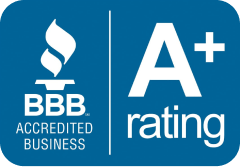There are different Medicare plan options, and the costs associated with each one are subject to change every year.
Medigap is a private insurance policy that serves as a supplement to the Original Medicare. Medicare supplemental insurance, also known as Medigap, is designed to help cover some of the costs that original Medicare does not cover. There are ten different types of Medigap policies that insurers can offer, designated by letters A through N.
Plan F, also known as Medicare Supplement Plan F, is the most extensive Medigap plan. Most of the costs associated with Medicare Parts A and B are covered by this insurance, reducing your out-of-pocket costs to a minimum.
Medigap Plan F is a good option if you need additional coverage for:
- require frequent medical care and visit the doctor often
- require financial assistance with nursing care or hospice care
- travel out of the country often but don’t have traveler’s health insurance
How much does Medicare Supplement Plan F cost?
These are your responsibilities as a Medigap Plan F subscriber.
- Monthly premium. There is a different costs associated with each of the supplemental insurance plans for Medicare. The price will differ based on the specific insurance policy you select and the provider you go through.
- Yearly deductible. Medicare Parts A and B both have annual deductibles, but Medigap Plan F does not. Medigap Plan F, on the other hand, is the only one that fully pays for the Part A and Part B deductibles.
- Copayments and coinsurance. When you enroll in Medigap Plan F, your out-of-pocket expenses for doctor visits and hospital stays will be nearly zero because the plan will pay for 100% of your Part A and Part B deductibles, copayments, and coinsurance.
Plan F monthly premiums
There is a regular fee associated with Medigap policies. You’ll have to pay this on top of your regular Medicare Part B premium.
Premiums for Medigap Plan F can vary greatly from one location to the next.
| City | Plan option | Monthly premium |
|---|---|---|
| Los Angeles, CA | standard deductible | $179–$1,163 |
| Los Angeles, CA | high deductible | $34–$210 |
| New York, NY | standard deductible | $318–$730 |
| New York, NY | high deductible | $72–$100 |
| Chicago, IL | standard deductible | $120–$1,093 |
| Chicago, IL | high deductible | $32–$227 |
| Dallas, TX | standard deductible | $109–$903 |
| Dallas, TX | high deductible | $34–$367 |
Plan F deductibles
In many regions, you can also choose the higher-deductible version of Medigap Plan F. In exchange for lower monthly premiums, participants in this plan are responsible for an annual deductible of $2,700 before Medigap begins paying benefits.
High-deductible If you’re looking for the most affordable monthly premium for your Medigap coverage, consider Medigap Plan F.
Plan F copays and coinsurance
Medicare Parts A and B copayments and coinsurance are paid for by Plan F. You will not have to pay for these out-of-pocket expenses if you have a Plan F policy.
Plan F out-of-pocket costs
While policy-to-policy variations exist, there are certain costs that Medigap policies typically do not pay for. You will be responsible for paying the full price of any uninsured services.
Many Medigap policies do not pay for services such as:
- long-term care
- dental
- vision, including eyeglasses
- hearing aids
- private nursing care
Plan F is unique among Medigap policies in that it doesn’t cap out-of-pocket expenses.
What does Medicare Supplement Plan F cover?
Plan F is the most all-inclusive Medigap policy available because it pays for nearly all of your Medicare Parts A and B premiums. Standardization ensures that all Medigap plans provide the same minimum level of coverage in all states (with the exceptions of Massachusetts, Minnesota, or Wisconsin).
What is covered by Medigap Plan F:
- Part A coinsurance and hospital costs
- Part A hospice care coinsurance or copayments
- Part A nursing facility care coinsurance
- Part A deductible
- Part B coinsurance or copayments
- Part B deductible
- Part B excess charges
- Blood transfusions (up to 3 pints)
- 80 percent of foreign travel costs
Medigap Plan F does not include coverage for your regular Medicare Part A or Part B premium payments and there is no out-of-pocket maximum.
Except for residents of Massachusetts, Minnesota, and Wisconsin, all Medigap plans must adhere to the same minimum requirements set forth by law. Plan F may not provide the same level of coverage in these states due to differences in how Medigap policies are regulated there.
Other options if you cannot enroll in Medigap Plan F
If you were enrolled in Medicare or otherwise eligible for Medigap coverage before January 1, 2020, you can keep or purchase Plan F. For new Medicare enrollees, Medigap Plan F is no longer an option, so you’ll need to look elsewhere if you want supplemental coverage.
If you do not qualify for Plan F, here are some other Medigap plans to consider:
- Medigap Plan G. Medigap Plan G is very similar to Medigap Plan F; the main difference is that it does not pay for the Part B deductible. This plan is essentially the “new” Medigap Plan F because Medigap policies sold to new beneficiaries may no longer include coverage for this deductible.
- Medigap Plan D. Due to the lack of coverage for the Part B excess charge, this plan is subpar to Plan G. Not all service providers will charge you extra for going over your allotted data, but if yours does, it can add up quickly.
- Medigap Plan N. Plan N is very similar to Plan D, but unlike Plan D, you might still have to pay a copayment for some office and emergency room visits.
Who can enroll in Medicare Supplement Plan F?
In case you are enrolled in Medicare Advantage and are thinking about switching to your original Medicare with a Medigap policy, you should know a few things first. Back in the day, Medigap Plan F was available to anyone with original Medicare. However, we are beginning to phase out this strategy.
Medigap Plan F will be phased out on January 1, 2020, making it accessible only to those who initially qualified for Medicare before that date.
You can keep your Medigap Plan F coverage and all of its benefits if you already have it. You may also be able to enroll in Medigap Plan F if you became Medicare-eligible before January 1, 2020, but missed the enrollment period.
There are specific times of the year when you can sign up for Medigap:
- Medigap open enrollment begins the month you turn 65 and enroll in Medicare Part B and continues for 6 months thereafter.
- Medigap special enrollment is for those who, due to a medical condition such as ESRD or another preexisting condition, may become eligible for Medicare and Medigap benefits before turning 65.
During the Medigap open enrollment period, it is illegal for insurance companies to reject you for having a preexisting condition. Although you may be eligible for a Medigap policy, you may be denied coverage by your insurance company based on health reasons if you apply for coverage outside of the open enrollment period.
Therefore, if you are still eligible, you should enrol in Medicare Supplement Plan F without delay.








